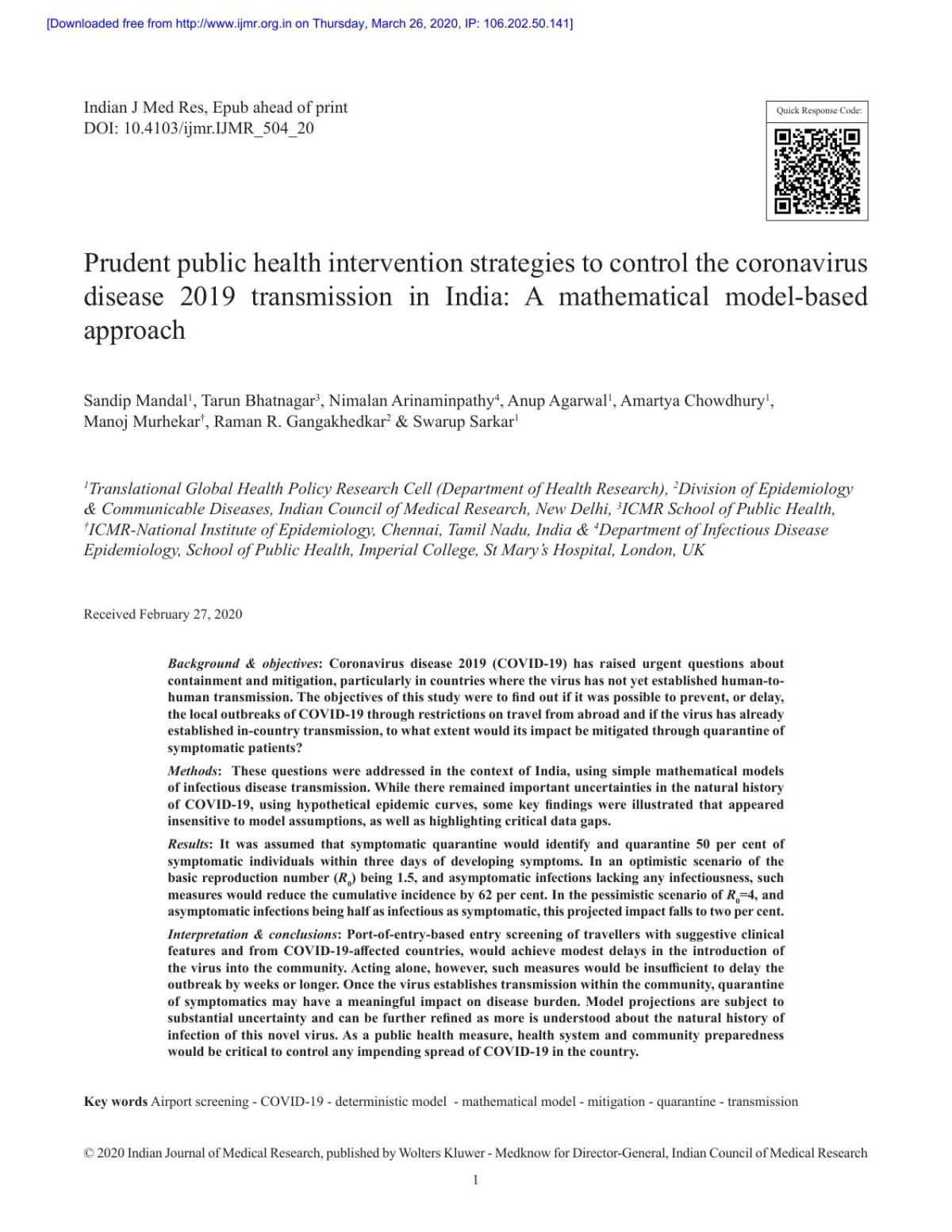

Most ebook files are in PDF format, so you can easily read them using various software such as Foxit Reader or directly on the Google Chrome browser.
Some ebook files are released by publishers in other formats such as .awz, .mobi, .epub, .fb2, etc. You may need to install specific software to read these formats on mobile/PC, such as Calibre.
Please read the tutorial at this link: https://ebookbell.com/faq
We offer FREE conversion to the popular formats you request; however, this may take some time. Therefore, right after payment, please email us, and we will try to provide the service as quickly as possible.
For some exceptional file formats or broken links (if any), please refrain from opening any disputes. Instead, email us first, and we will try to assist within a maximum of 6 hours.
EbookBell Team

4.3
58 reviewsBackground & objectives: Coronavirus disease 2019 (COVID-19) has raised urgent questions about
containment and mitigation, particularly in countries where the virus has not yet established human-to-
human transmission. The objectives of this study were to find out if it was possible to prevent, or delay,
the local outbreaks of COVID-19 through restrictions on travel from abroad and if the virus has already
established in-country transmission, to what extent would its impact be mitigated through quarantine of
symptomatic patients?
Methods: These questions were addressed in the context of India, using simple mathematical models
of infectious disease transmission. While there remained important uncertainties in the natural history
of COVID-19, using hypothetical epidemic curves, some key findings were illustrated that appeared
insensitive to model assumptions, as well as highlighting critical data gaps.
Results: It was assumed that symptomatic quarantine would identify and quarantine 50 per cent of
symptomatic individuals within three days of developing symptoms. In an optimistic scenario of the
basic reproduction number (R0) being 1.5, and asymptomatic infections lacking any infectiousness, such
measures would reduce the cumulative incidence by 62 per cent. In the pessimistic scenario ofR0=4, and
asymptomatic infections being half as infectious as symptomatic, this projected impact falls to two per cent.
Interpretation & conclusions: Port-of-entry-based entry screening of travellers with suggestive clinical
features and from COVID-19-affected countries, would achieve modest delays in the introduction of
the virus into the community. Acting alone, however, such measures would be insufficient to delay the
outbreak by weeks or longer. Once the virus establishes transmission within the community, quarantine
of symptomatics may have a meaningful impact on disease burden. Model projections are subject to
substantial uncertainty and can be further refined as more is understood about the natural history of
infection of this novel virus. As a public health measure, health system and community preparedness
would be critical to control any impending spread of COVID-19 in the country.